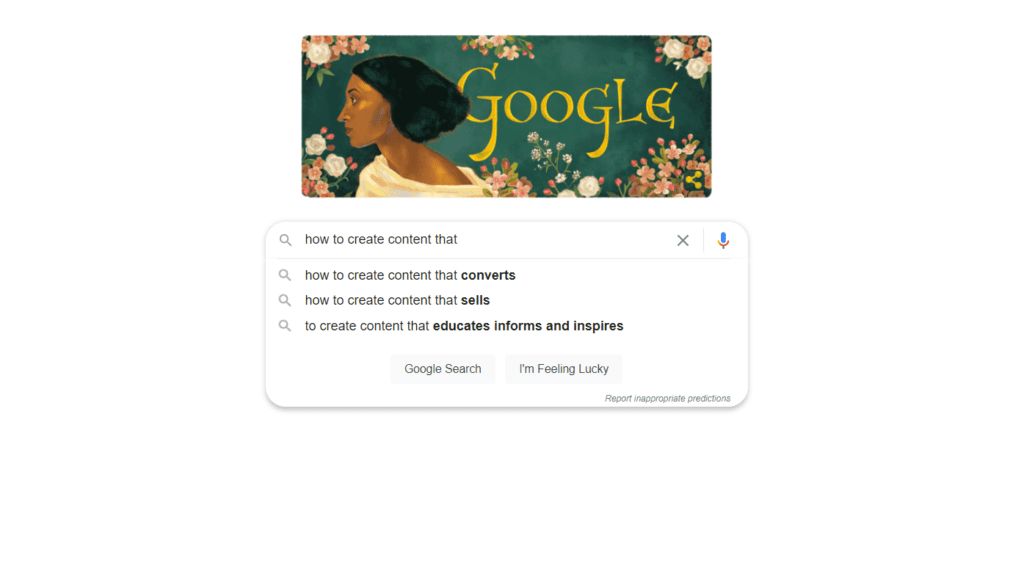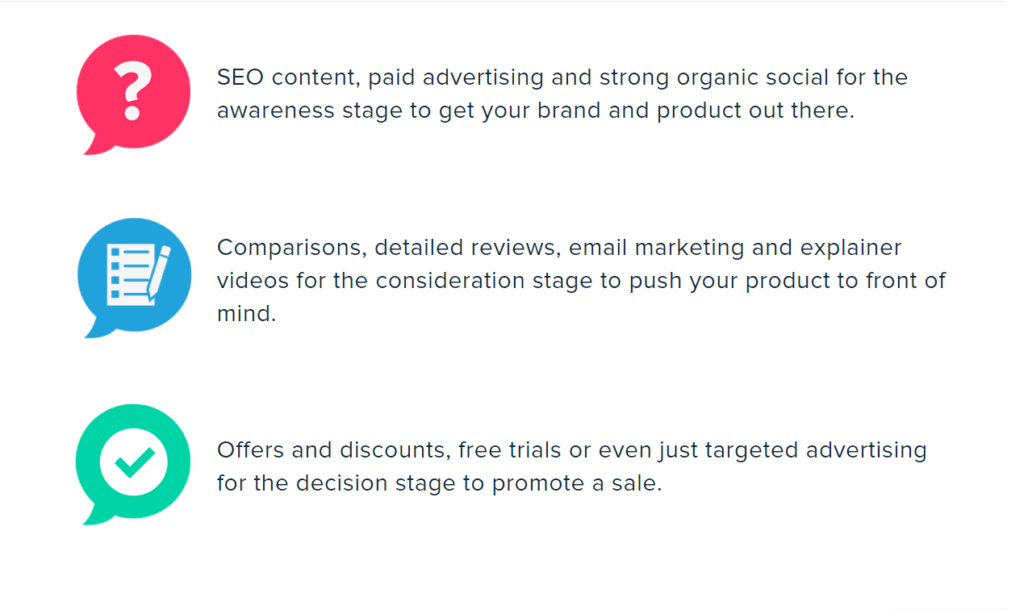Creating content that converts is just as important to marketers as it ever has been. But with tactics evolving, we look at the ways you can create great content.
It’s not news to anyone that content is king.
To create content that converts, you need to put your reader first.
Content marketing done right has the capability to drive hundreds, or even thousands of new website visitors, and convert them from prospects to sales.
But, if done wrong your content marketing can disappear into the archives of search engines.
Here our team has worked on exactly that.
And it’s worked.
We’ve grown traffic by over 300% and organic search continues to be our main source of inbound demos and sales.
So how did we do it?
First, a bit of background.
Currently, 70% of marketers are actively investing in content marketing. That’s a huge amount of competition, all looking to get position one, or zero, on their top keywords.
But, sadly for these marketers, not everyone knows how to do it right. In 2019, ‘content marketing strategy’ was the most searched query related to content marketing.
Clearly, there are some problems when it comes to creating content that converts.
With search the number one traffic source to blogs across all industries, creating content that converts is a must if you’re going to make noise.
But not all content is created equal. And each serves its purpose.

So, how do you make content that creates leads and drives sales?
We’ll be discussing the 9 ways we grew our content marketing strategy:
Let’s get stuck in!
Well, in 2023, content that converts looks very different to what worked 10, or even just 5 years ago.
We’re in the age of demand generation (as opposed to lead generation), and so it’s more vital than ever to be writing content that appeals to your target audience.
Related: What’s the difference between demand generation and lead generation
Remember, what might work for us, might not work for you.
It’s important to first completely understand your audience and their thoughts on your product or service.
A SaaS company will have different priorities, and therefore a different strategy than what a legal firm might use.
So job number one is to understand what good content in your industry looks like.
Ask yourself:
Understanding these questions can be the perfect springboard to creating good content.
Creating content is a numbers game. Creating content that converts relies on data. Do you know what currently works?
As of 2019, a survey of bloggers found that only 32% of respondents always checked the analytics of their blog posts.
Take it from us, the way to win the content game is by working smarter, not harder.
But remember, there are two parts to understanding success when it comes to content.
Chances are, half of your content is highly-optimised SEO content that’s created to drive new sessions and rank well on SERPs.
The other half is written to drive conversions and maybe won’t rank well on SERPs but serves just as well as part of your content strategy.
While Google Analytics is a great way to get a basic understanding of your content performance, it’s just one step.
Once you’ve published your content, you need to analyse its ranking on a regular basis. Tools like Ahrefs, SEM Rush and Moz are great for understanding where your blog content is ranking, and what work you need to do to improve it.
But it goes even further. We want content that converts, not just content that drives a lot of views. The only way to understand that is by connecting your sales to your marketing. Now, if you’re an eCommerce business, then you won’t struggle doing this directly in Google Analytics.
But what about those who convert users via a sales team, or tend to see a long sales funnel that lasts beyond the tracking time frame of 90 days?
Marketing attribution is a great way to overcome these barriers. Tools like Ruler Analytics allow you to view how your content is working, from a first and last click perspective, to drive leads and revenue.
Related: Marketing attribution tools you need to try
According to DemandMetric, content marketing costs 62% less than traditional marketing and generates about 3 times as many leads.
But how do you find opportunities that will create conversions?
Let’s break it down.
First, you need to research your keywords. What is your target audience searching for and how are they finding you?
Chances are, there are plenty of keywords out there that you could compete for. Check out keyword research tools like Ahrefs, SEMrush and Moz to find high volume, low competition words to create content for.
Another great method to find content that works is good old fashioned competitor analysis. You know who your main competitors are, so what are they writing about? Analyse their content performance in SEO tools, to see what they’re ranking well for.
One thing to remember is intent. We’re not just writing content for those at the awareness stage of the buyer’s journey. We’re writing content for those we want to convert.
So, they’ll likely already be aware of your company.
Great content to drive users into the decision stage include:

But you can also convert users with more ‘top of the funnel’ search terms, as long as your product really fits.
For example, we wrote a blog on the best marketing attribution tools. This is more of a middle of the funnel term, as the user knows they want marketing attribution, And, despite linking to some major competitors, this blog still works to bring in new leads month on month!
And don’t forget the content already on your website! 51% of companies say updating old content has proven the most efficient tactic. Check what you’re currently ranking for, and improve it.
By harnessing the existing SEO you’ve already created, you can make serious moves in rankings by updating and refreshing existing content. And, for those blogs that are driving a lot of traffic, make sure you’re adding in strong CTA’s to convert those visitors.
⚡️ Pro Tip
Not sure how to track the impact of your organic content when users aren’t converting on it? Learn how to track customer touchpoints here.
Ok so we’ve been talking a lot about blogs but getting content that converts doesn’t have to just be written word.
In fact, 80% of video marketers claim that video has directly increased sales. And it doesn’t stop there. As of April 2020, there were over 30 million podcast episodes in existence. And with all this new content, of course Google’s search algorithms are trying to transcend them. So be prepared to optimise your images, podcasts, videos and text content.
When you’re conducting keyword research, check what content is ranking. Google often pulls video content up from YouTube for some searches. So, perhaps you’d be better off creating video content instead of writing a blog for that keyword.
Test out new forms of content and experiment! And remember, creating a blog doesn’t mean you can only have that blog. Recycle it!
Use that blog to create a video. Use that video to create an infographic. The more content you have out there, the more likely it is you’ll start to get noticed. And, fingers crossed, convert users.
✏️ Note
Overwhelmed trying to track the impact of well, everything? Read our guide to measuring your marketing to learn how to get the most of each channel.
According to Sumo, visitors will only read 20% of your article, on average.
If that’s the case for your content, then your job is to make sure important points stand out in your content marketing.
The LIFT model is a methodology used to optimise conversions. Normally, its associated with landing page design and copy, but its pretty much transferable to any content.
There are six elements that make up the LIFT model. Each component works to create compelling content that converts. They are value proposition, urgency, relevance, clarity, anxiety and distraction.

A value proposition refers to the value a company promises to deliver to customers should they choose to buy their product. This is what will propel your conversions.
When you define a problem and provide practical steps to solve that problem that includes using your product or service, well, you’re onto a winner.
With every piece of content, you should try and weave in your proposition (where relevant of course). It’s the key to convincing a reader that your product is the one for them, so they subsequently convert.
Nobody wants to miss out on a valuable resource. Adding urgency to your content, particularly your CTAs will convince a buyer they need to act quickly.
Of course, it’s much easier to add urgency to sales copy in a landing page than it is to a blog or video. But, it’s not impossible.
The trick to adding urgency to your content is understanding why they would be on your blog in the first place.
Imagine you’re writing a blog on SEO tips and tricks. Now your blog might include techniques that a reader can use to drive more organic traffic themselves. But, if you’re an SEO agency, then you can talk about how your content can save them time, or even better, money.
Perhaps you’ve created an eBook on 5 easy secret tricks to optimise your SEO. By offering it as FREE, there’s an implication that it’s normally costed. And so, the user is more likely to swap their details for your eBook to make the most out of a free offer.
You can also add urgency through your language choice. For example, your blog titles could use words and phrases like, “Don’t be left”, or “The only strategies you need”.
This one’s simple. Your content needs to relate to what your reader is expecting. You always need to be writing for your readers. Your content needs to appeal to the needs, concerns and issues that your audience typically encounters.
Here’s what you need to do:
Segment your audience: Your product and offer’s capabilities won’t apply to all of your customers. There will be certain sector based content, or feature-specific content that fits particular segments of your audience.
Write for varying experience levels: You want to reach decision-makers, but you can’t exclude those more junior members who can all contribute to deciding a new product or service.
While you want to prioritise content around search intent, you also want content that is going to stand out to the key decision-makers too.
Clear, straightforward copy in your content is how you can communicate your proposition in a way that can be easily understood by your audience.
Try to avoid endless paragraphs and keep your copy succinct. Storytelling will help you to articulate your proposition and relate it to your content so the call to action comes naturally.
Here’s a quick guide on how to write content:
Great content reduces anxiety in the reader. Educating them will obviously help reduce that anxiety, but you will also need to prove that you’re a credible source.
Here’s how to do that:
Empathise: By proving that you have had the same issues as your customers, then you can prove your trustworthiness. Share how you struggled and resultantly overcame these issues
Tell a story: Integrate your personality into your content. Use analogies, metaphors and your own personal language and experience to dictate your story
Include your bio: Now you’ve added personality to your content, add your face too! Add a short bio along with a professional photo to improve professionalism
Avoid cluttering your content with product links. Focus on highlighting the elements of your content that will promote conversions. These include your headlines and your CTAs.
“Write attention-grabbing headlines” has almost become a cliché, it’s so often stated. But that doesn’t mean it’s not true.
To ‘win’ a click, your piece of content needs to stand out among an ever-growing crowd of similar content. While you want to make sure your headline matches your content, you also want it to stand out.
Use the techniques we’ve already discussed, creating a sense of urgency, or fear of missing out. The first step to creating content that converts is getting the user to click on the content, right?
Test out new, snappy titles on well-ranking content and test how your traffic changes. Use that insight on new content pieces to continue to drive interest.
People like reading charming, witty, personable blogs. They don’t want a long, boring monologue. We’re already adding our bio to our content pieces, but what about your tone of voice too?
Now you’ve established yourself as a writer, you need your own style. Of course, you want to keep to your overall business tone of voice. But don’t feel afraid of adding personality. That is often what makes or breaks a piece of content and its ability to convert a reader.
Our best tip? Write as if you’re talking to someone. Your sentences will flow, and you won’t stuff your content with keywords that feel unnatural. Instead, you’ll naturally use phrases that your reader will be searching for and you know what that means? Better ranking capability!
Ok we want personality, but we want it to be easy to read. If you use WordPress to write your content, then they have a handy ‘readability’ score which will assess your content.
According to Hubspot, 73% of people admit to skimming blog posts while 27% consume them thoroughly.
So take note of WordPress’s recommendations. Passive voice is a big no-no, as are blocks and blocks of text without a heading.
Some basic rules include:
Remember, for your writing to drive leads, it needs good writing, a good idea and good design. These three together are a sure-fire way to drive conversions on your content.
Emotion is important. And writing with emotion is essential to creating content that converts.
What makes you convert? Most likely, you find a product that solves the exact problem you have. Your blogs and videos, if well researched, will hone in on a particular problem as its topic.
From there, you’ll walk a reader through all of the problems they’re having, and also how to solve them.
The key is to give advice, not a pitch. Adding CTAs is important to drive that conversion, but its placement is crucial.
Add CTAs where emotion is high. Use your CTA to suggest a solution.
Don’t shy away from adding more content to your content! Even in informative or tip-sharing blogs, you can add content like endorsements or testimonials.
These work alongside your informative content to drive users down the funnel, directly in one piece of content.
And remember, longer articles perform better. In fact, according to SEMrush, articles that are over 3,000 words get three times more traffic, four times more shares, and three and a half times more backlinks than shorter articles.
But you want those words to be meaningful and add value. Craft your content carefully for your reader’s search intent. And, if you follow our simple steps, then you’ll be on your way to driving more and more leads through your content.
A marketer’s top priority is to generate leads. And content can help you create leads. But without following a clear content strategy, your outputs are going to get lost in the ether.
And remember, if you want to track each and every lead (whether they convert offline, or one year later), you can. This will help you understand how your content is driving leads, and revenue, so you can optimise your outputs.
Find out more about marketing attribution and how Ruler works, or get in touch with us via live chat for any questions.